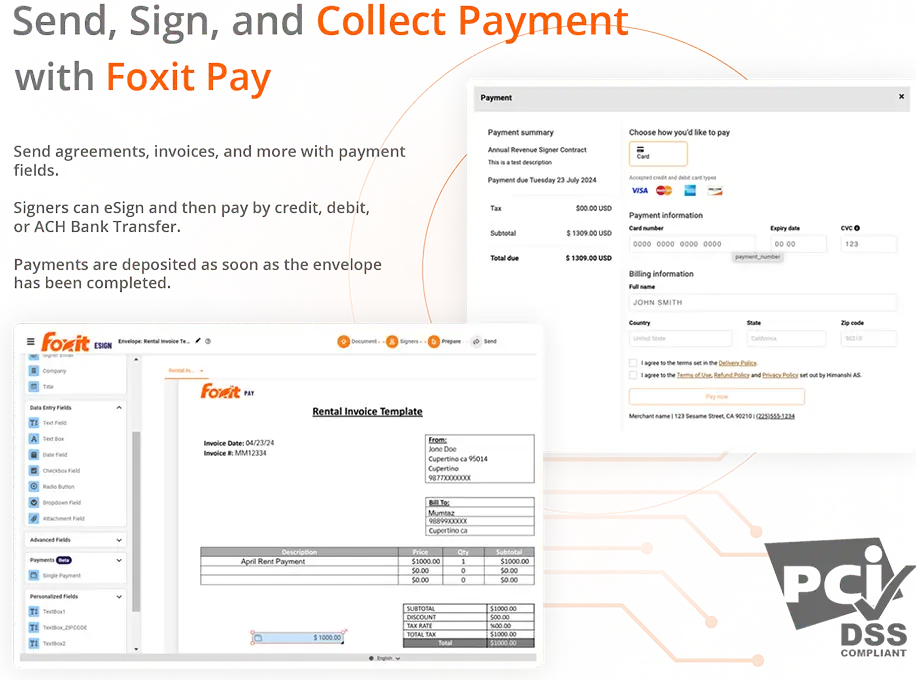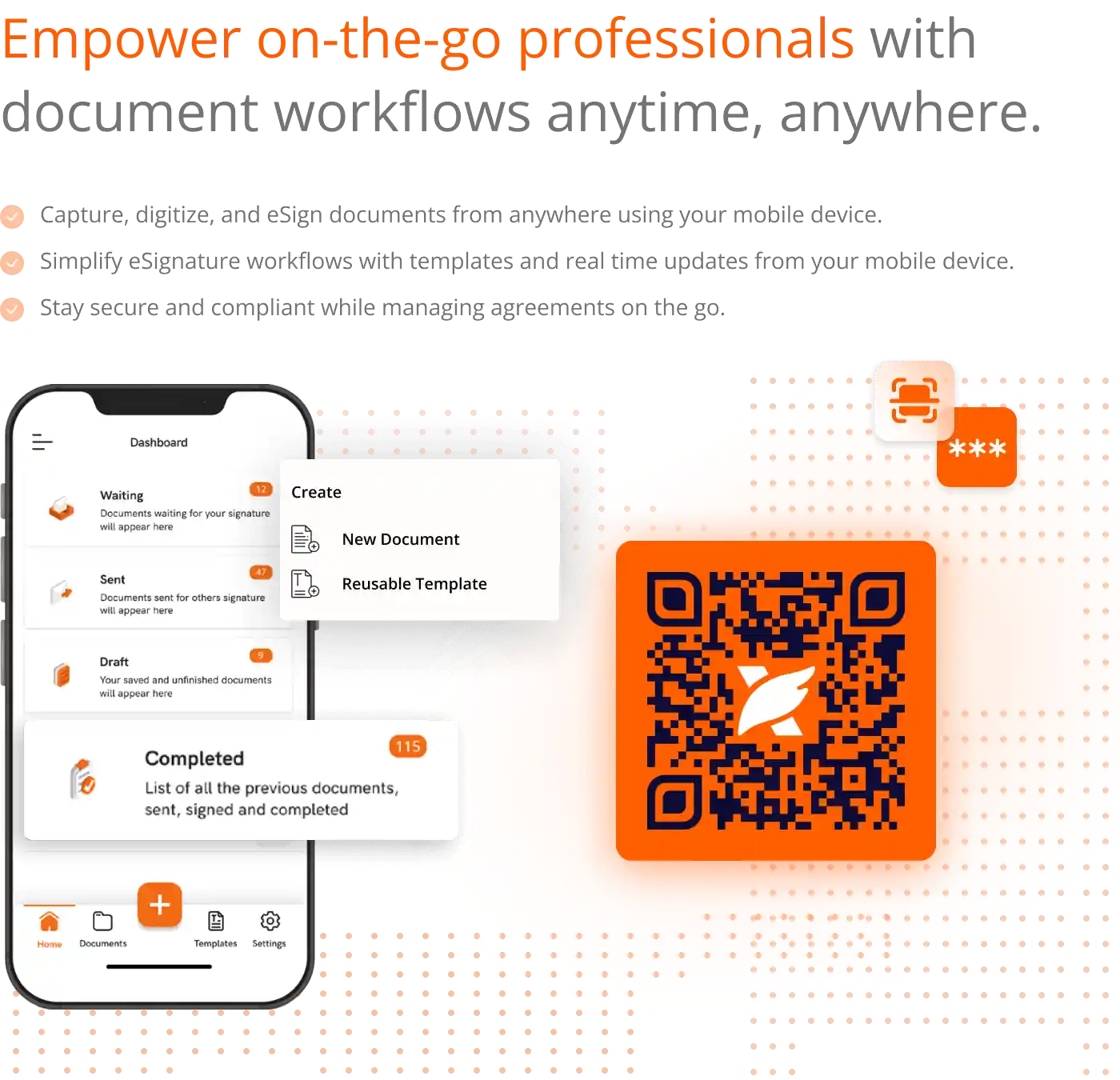eSign PDF
Send, Sign, and Collect Payment
Innovation Beyond eSignatures
Break away from cookie-cutter eSign solutions and empower businesses to get documents signed, collect payments, and keep workflows moving. Our solution will flex to unique needs and comes in two plan options: simple eSigning and payment collection tools for individuals with Foxit eSign Essentials, or empower team efforts with template sharing, custom branding, and user management tools with Foxit eSign Business.
Send and Sign Simple Agreements For Free!*
or drop file(s) here
*No Foxit account required to sign an agreement or request a signature with this free tool. Signatures collected using this free tool are not legally binding or compliant with eSigning standards. If you need legally binding or compliant eSignature Software,
Foxit eSign Essentials and eSign Business
Send, track, sign, notarize, and collect payments.
all-in-one tool
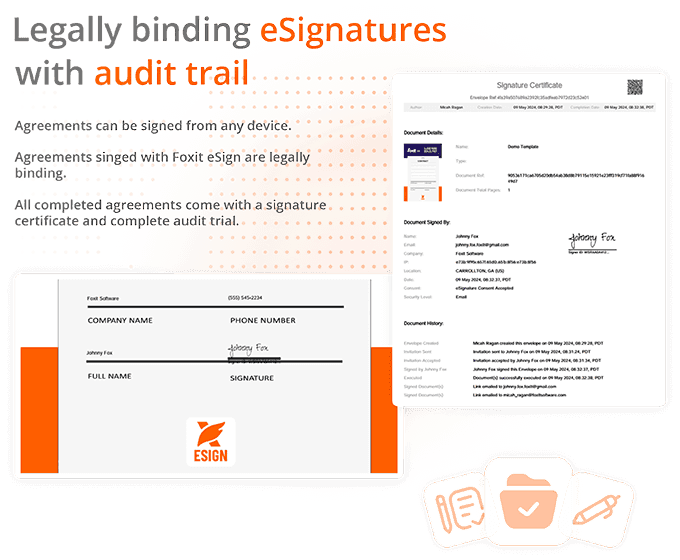
Agreements signed with Foxit eSign are legally binding, providing the peace of mind needed to work effectively.
Explore More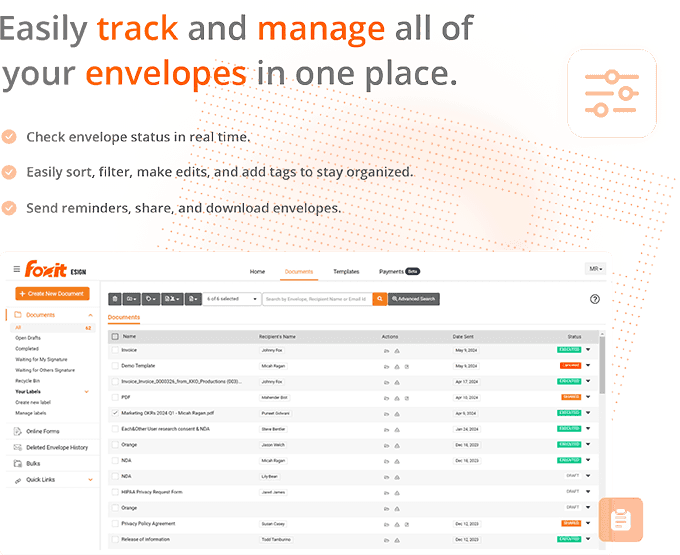
Keeping up with agreements, quotes, and offers does not need to be a chore. We like to keep it simple. See all outstanding and completed agreements on one sortable screen.

Build it once, reuse it as often as needed. Easily maintain multiple templates for your signing needs.
Explore More
We have you covered. Foxit eSign is SOC 2 Type 2 compliant, with robust encryption, data localization, and more.
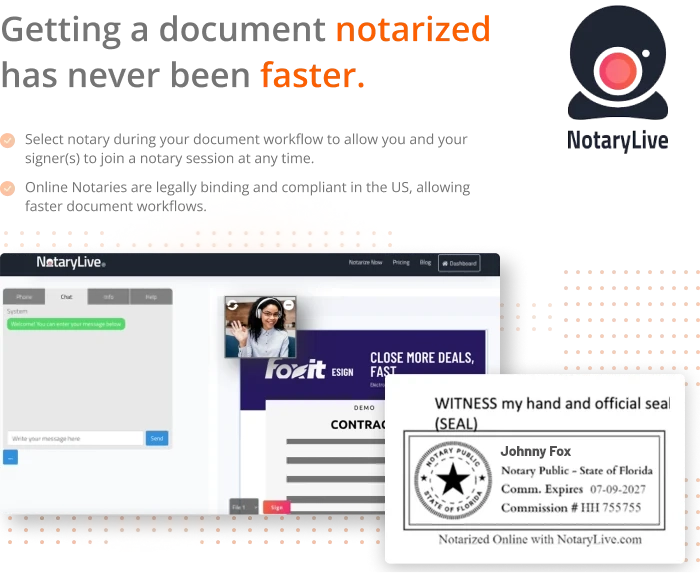
Add notary services to your document workflow and get documents notarized with our NotaryLive integration.
Explore MoreSign, manage, and send documents securely on iOS and Android with the powerful and compliant Foxit eSign App.
Explore More(Includes all Essentials Features and Modules Access)
Innovation meets value
Package Options
FOXIT
eSign Essentials
The eSign Solution for Individuals
- Collect Payments
- 250 Envelopes Annually
- Legally Binding eSignatures
Most popular
FOXIT
eSign Business
For Growing Companies and Enterprise
- Unlimited Envelopes
- Unlimited Templates
- Custom Branding
see for yourself
Videos
Learn more about the powerful Foxit eSign solution.

Xseed CEO Mateo Bervejillo discusses how Foxit eSign Business has revolutionized document workflows for his company.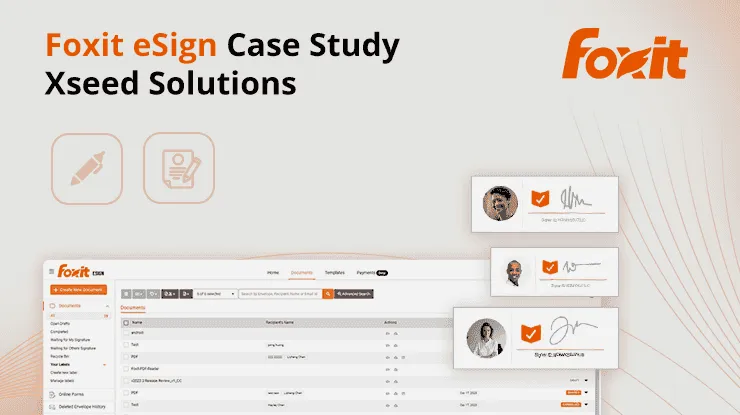

See how to create an on-demand notary workflow with Foxit eSign.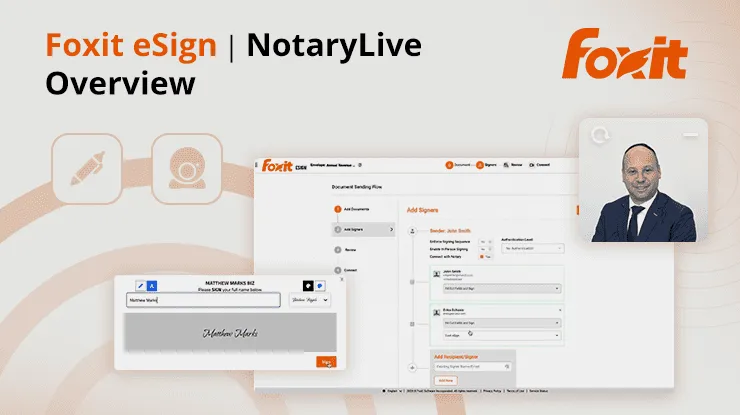

Join Charles and Nake from Foxit and Joshua from NotaryLive as they discuss all things notary.



we’re constantly growing
What's New
Our development team is working around the clock to enhance and expand the Foxit eSign. Updates are regularly completed and feedback from our customers help us turn great into greater. If you would like to know more about the latest and greatest from our development team, click the link below to see what we have been working on.
New Features
Product updates
UI enhancements
Admin enhancements

let’s work together
Partners
Unlock exciting opportunities by becoming a Foxit eSign Partner! Gain access to exclusive benefits while driving business to our innovative solution when you join our partner network. Our partners receive revenue share for every referral customer, creating a mutually beneficial partnership. Accelerate your success and maximize your profitability potential. Sign up now and start making an impact today!

